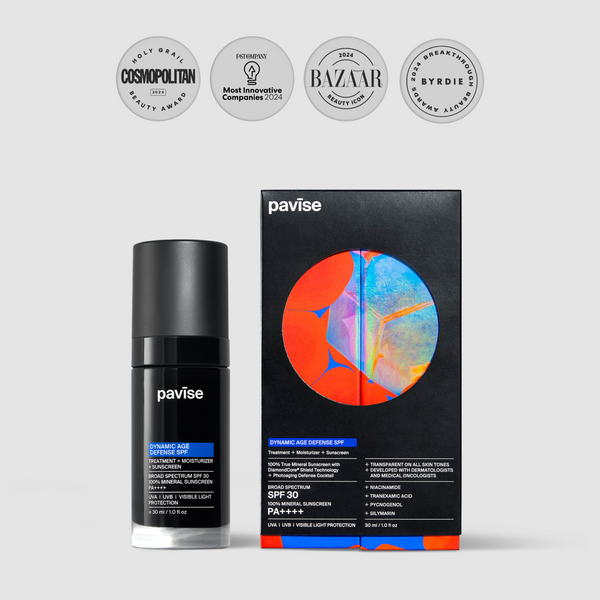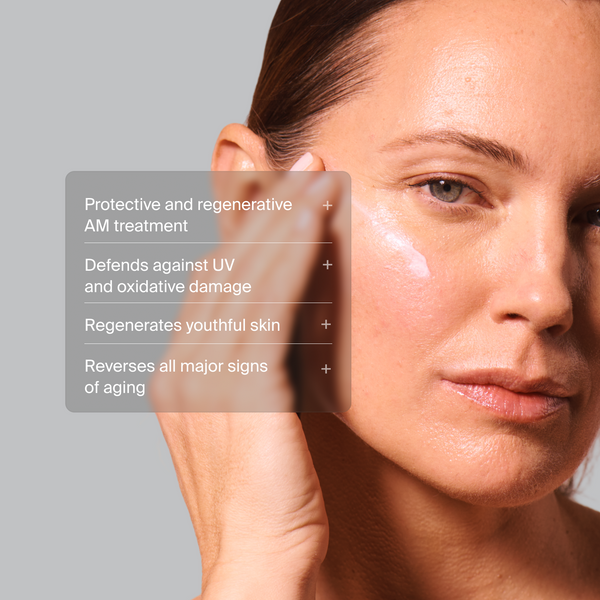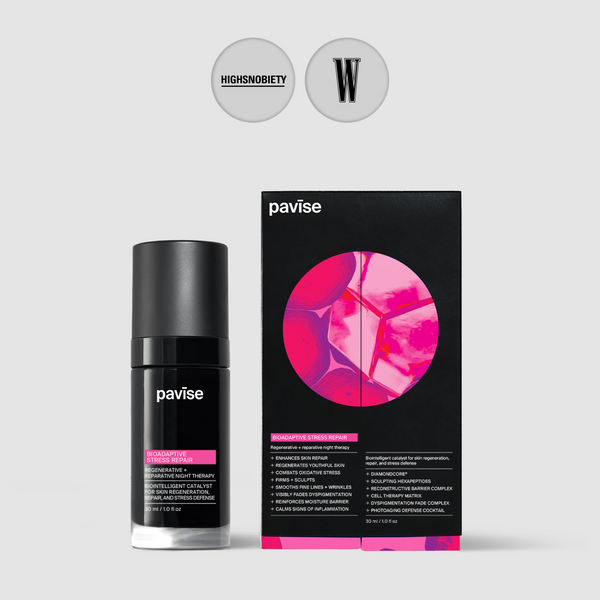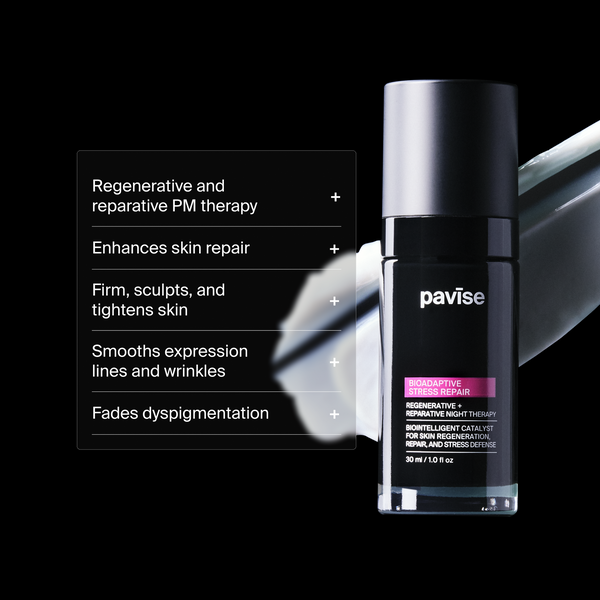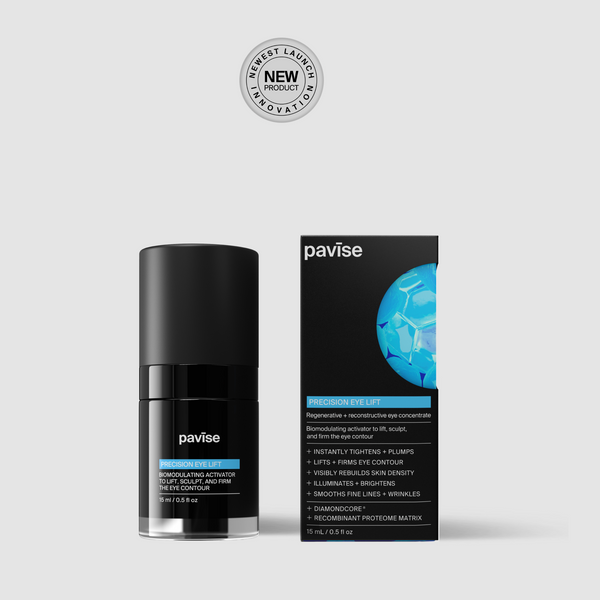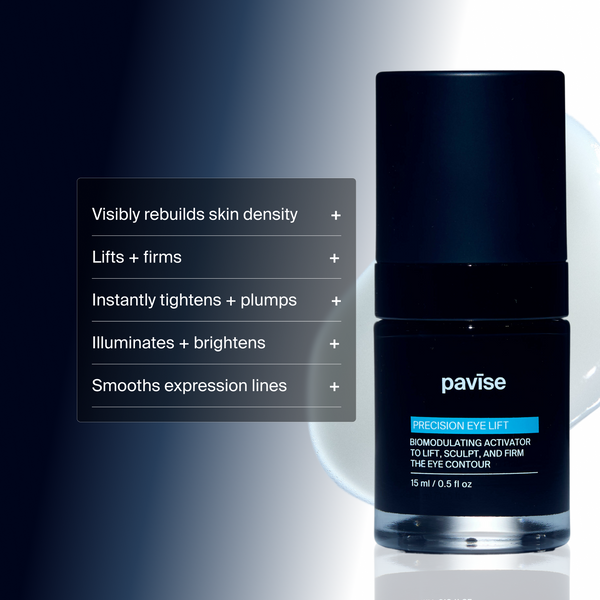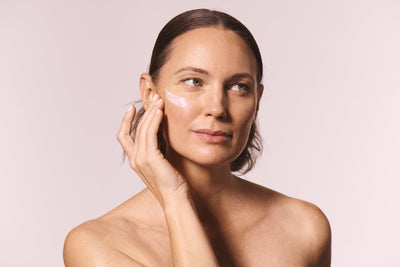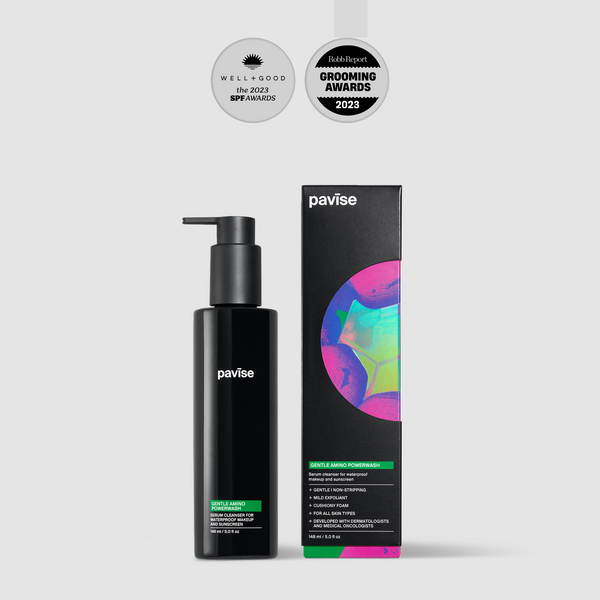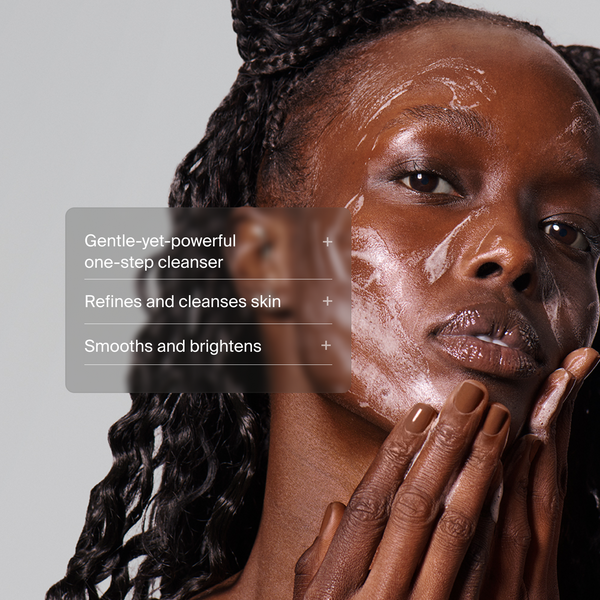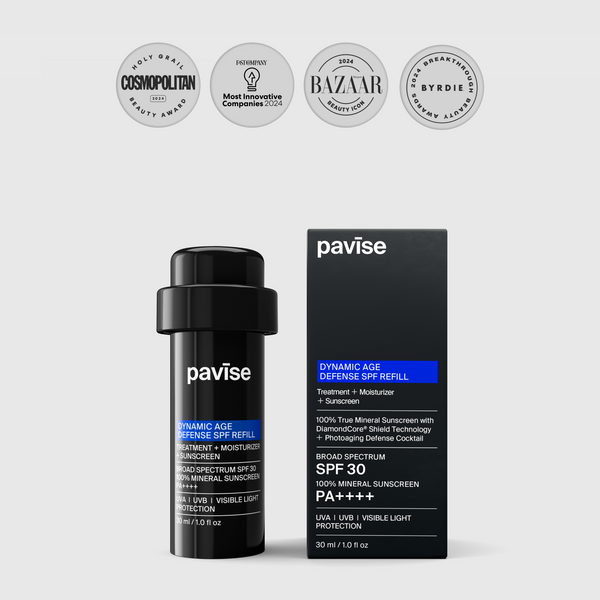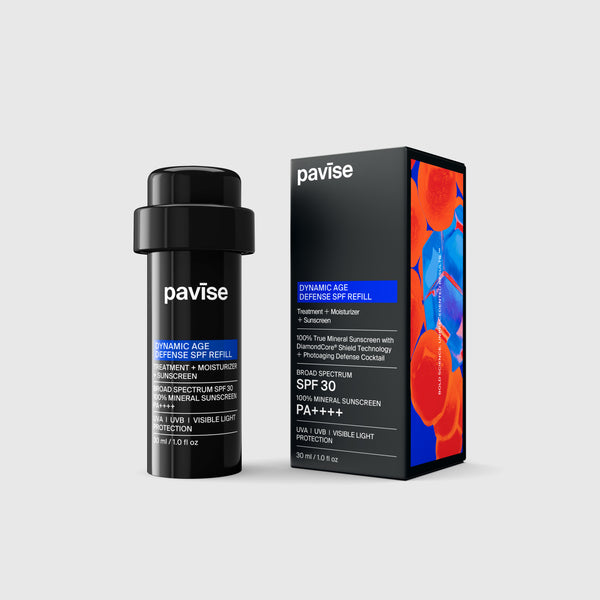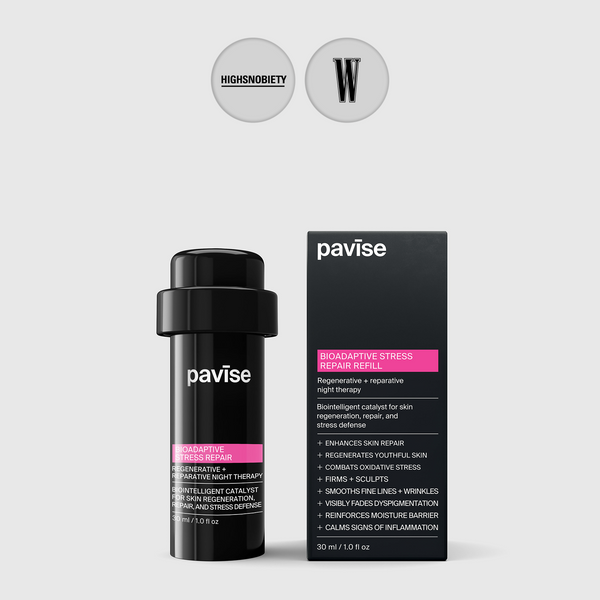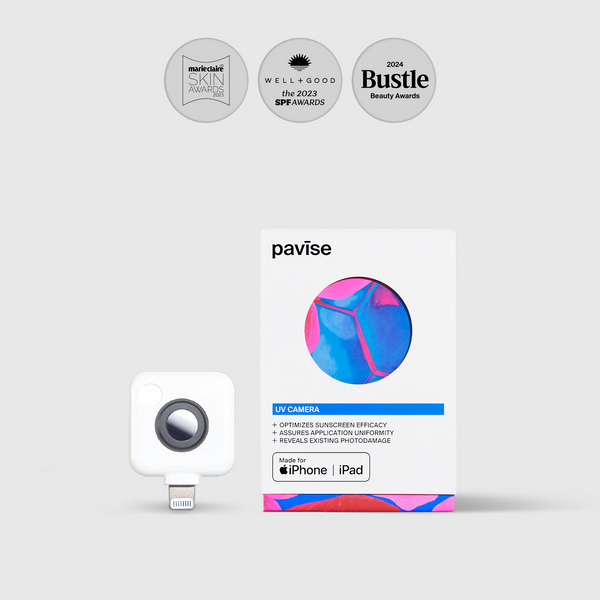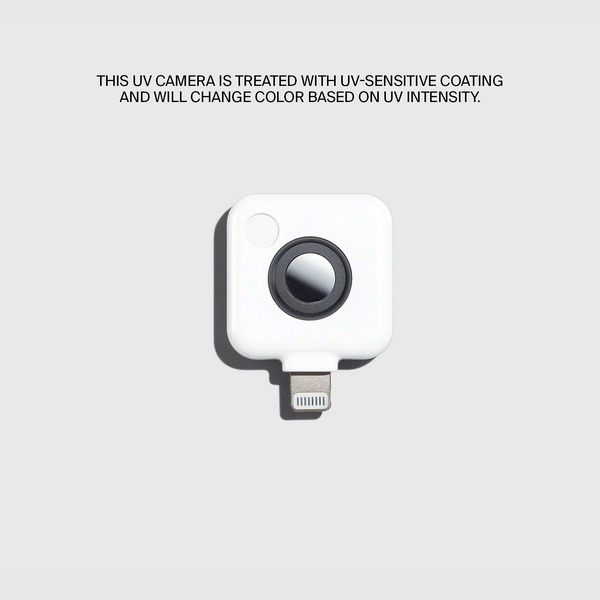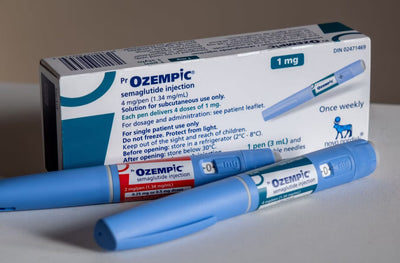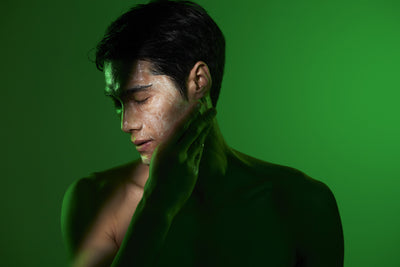CHEMICAL VS. MINERAL SUNSCREEN: HOW TO PICK THE BEST ONE FOR YOU
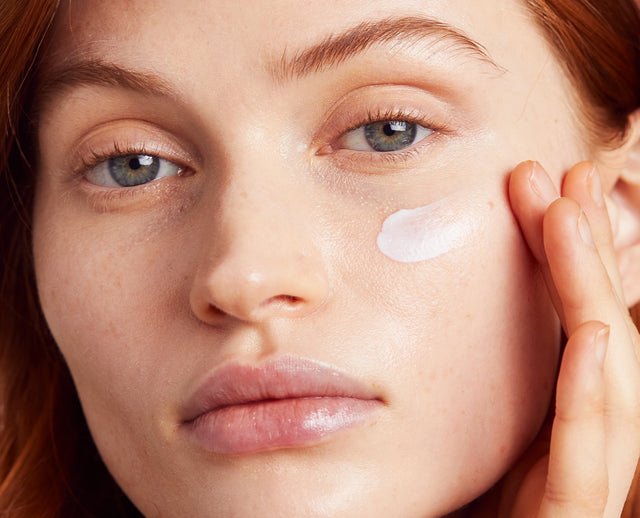
What you need to know
The best sunscreen is the one you’re willing to apply everyday - that’s the best way to protect your skin long-term from skin cancer.
Chemical UV filters often feel nicer to apply, but are more likely to cause skin irritation and have some safety data that consumers should be aware of before purchasing.
Mineral UV filters have GRASE (generally recognized as safe and effective) status from the FDA, but can leave a white cast, be more difficult to apply, and leave skin feeling oily at first and then dry later.
It’s important to know the difference between UVA and UVB radiation and how either type impacts aging, skin degradation, and likelihood of skin cancer so that you understand how important it is to invest in sun protection. Choosing between types of sunscreens and UV filters, however, can be confusing and overwhelming.
What is the difference between chemical and mineral sunscreens? Is one more effective or safer than the other? Are mineral sunscreens better for the environment? Are chemical sunscreens hormone disruptors?
These questions don’t have simple answers—the FDA is still assessing the benefits and risks of chemical and mineral UV filters.14 This compilation of expert knowledge and clinical findings provides you a better understanding of the differences, risks and benefits of chemical and mineral UV filters so that you can make the most informed decision for yourself. After all, the best sunscreen is the one you’re enthusiastic about applying every day.
What are UV filters?
UV filters are the active ingredients used in sunscreens that absorb, reflect, or scatter UV rays. By doing so, UV filters reduce the risk of short and long-term UV damage to the skin. Short-term damage can appear as burning, erythema (skin turning red, dark brown, or purple depending on your skin tone), and blistering. Long-term damage appears as wrinkles, hyperpigmentation, collagen degradation, texture, and/or skin cancer.2
In the US, sunscreens are considered over-the-counter (OTC) drug products, and are regulated by the FDA.13 This means that the FDA requires that specific tests be performed on sunscreens and sunscreens’ active ingredients—UV filters—that verify their safety, efficacy, and stability. The FDA’s approval of UV filters lags significantly behind other countries, and new UV filters have not been added to the FDA’s final OTC monograph since 1999.13 This slow pace has frustrated dermatologists and sunscreen innovators in the US as newer, sometimes more protective UV filters have gained approval and wide usage in other countries.
The case for, and controversy of chemical filters
Chemical UV filters, or organic filters, are carbon-based compounds that protect skin from UV damage by absorbing UV photons, preventing them from being absorbed by skin cells. Each chemical filter absorbs a different range of wavelengths across the UV spectrum). The majority of chemical filters approved by the FDA are only capable of absorbing and protecting against UVB rays. Avobenzone is the only chemical UV filter that is able to absorb and protect skin against UVA rays that has been approved for use in the US. To achieve broad spectrum sun protection, a chemical-only sunscreen must contain avobenzone and at least one other chemical UV filter.
Newer chemical UV filters that have been approved for use in other countries outside of the US have broader UVB and UVA ray protection than current FDA-approved chemical filters.
These are the 14 chemical UV filter approved for use by the FDA, but the first 6 are seen most often in sunscreens today:18
- Avobenzone
- Homosalate
- Octinoxate
- Octocrylene
- Oxybenzone
- Octisalate
- Aminobenzoic acid
- Cinoxate
- Dioxybenzone
- Meradimate
- Padimate O
- Ensulizole
- Sulisobenzone
- Trolamine salicylate
- Bis-ethylhexyloxyphenol Methoxyphenyl Triazine (Tinosorb S)
- Diethylamino Hydroxybenzoyl Hexyl Benzoate (Uvinal A Plus)
- Ethylhexyl Triazone (Uvinul T 150)
Chemical UV filters are known for their cosmetic elegance in sunscreen formulas. Their superior skin penetration and absorbability make application faster and more seamless. For those who are worried about white cast, particularly those with darker skin tones, chemical filters are typically more invisible than mineral ones.
There are a number of risks to be aware of.
- Chemical filters are more likely to cause skin irritation and contact dermatitis.
- One cross-sectional study spanning 10 years involving nearly 24,000 participants identified contact dermatitis in 64.4% of participants after exposure to 3% oxybenzone (FDA allows concentrations in sunscreens up to 6%).11
- Chemical filters may generate ROS (reactive oxygen species) in skin after UV exposure.5,8
- When chemical filters absorb UV photons, they’re really absorbing energy. This absorbed energy “excites” the chemical filter’s molecules. This increased energy results in molecule instability, and the chemical filter’s molecules can sometimes dissipate this energy via radiative processes. When this happens, ROS are generated.
- ROS, a kind of free radical, has the potential to incite cell and DNA damage in skin cells. This can appear as aging, wrinkles, and hyperpigmentation.2 Ironically, ROS-related photodamage from sun exposure is exactly what these chemical filters are meant to prevent.5,8
- Chemical filters are more easily absorbed from the skin into the bloodstream than previously assumed.
- In 2020, an FDA-sanctioned clinical study found that after 1 day of use, the 6 most commonly used chemical UV filters listed above (avobenzone, homosalate, octinoxate, octocrylene, oxybenzone, and octisalate) were detected in blood and urine samples at far beyond the FDA’s safety threshold levels (0.5ng/mL), up to 360 times the recommended level. Levels stayed elevated up to 3 weeks after use.13,14
- Higher levels of absorption, however, do not necessarily equate to higher risk of harm to your health. The FDA concluded that although this didn’t make the chemicals unsafe, more testing would be required before the FDA considered the filters “GRASE,” or generally recognized as safe and effective. They noted that as of now, research demonstrates that the potential health risks associated with not wearing sunscreen (your risk of melanoma just about doubles) are far greater than the risks associated with chemical UV filters.13,14
- It’s also worth noting that the study required that participants apply sunscreen to 75% of their bodies. Your daily use may only include your face and neck.
- The fear around the FDA’s recent absorption studies is closely linked to suspicions that have been circulating for some time regarding chemical filters’ ability to disrupt hormones, induce neurotoxicity, and cause cancer.12,15,16, 20
- Studies that have produced statistically significant results have been done either in animals or in vitro (usually with cells). While this data should not be ignored, it’s important to note that animal and in vitro studies do not correlate directly with what would happen in humans. Animals and cells are also typically exposed to doses significantly higher than what would typically be seen in humans. Studies that have attempted to prove the correlation in humans have proved inconclusive.12,16
- It’s ultimately up to your own threshold of safety and risk when assessing chemical UV filters. It’s understood that chemical filters can pass through the blood-brain and blood-placenta barrier, and that fetuses and young children are typically exposed to higher concentrations of any chemical, so pregnant and breastfeeding people and children may want to be more cautious.20
- Oxybenzone, octinoxate, avobenzone, and octocrylene have been banned in Hawaii as of 2023.
- Multiple studies done on coral and other aquatic life showed that oxybenzone, octinoxate, and octocrylene harmed their health. These findings sparked Hawaii’s ban on oxybenzone and octinoxate-containing sunscreens.1,3,9
- Skeptics do note, however, that most of the studies were performed in controlled lab settings, and that in situ (in their natural environment) testing has been limited to a few studies in specific tropical regions.3,9 Many experts rank UV filters extremely low (like #200) on the list of threats to coral reefs and warns that the focus on chemical filters distracts from what consumers should be focused on - how climate change is destroying them.4,6, 10,19
- It’s also important to note that “reef-safe” is not a regulated claim, and reef-safe sunscreens typically refer only to the absence of certain chemical UV filters. It’s impossible to know whether other ingredients, packaging materials, etc. contribute to reef safety, and some data even suggests that high levels of zinc oxide can also damage coral reefs.
- Pavise uses the term “vacation-friendly” on packaging to communicate that our Dynamic Age Defense SPF does not contain any chemical UV filters, and that Pavise respects Hawaii’s concerns around chemical filters’ potential impact on their reefs - you can take Pavise with you on your vacation to Hawaii. We understand, however, the nuance behind potentially fear-mongering claims and are working to improve the way we talk about our products.
Mineral filters
Mineral UV filters, sometimes called physical or inorganic UV filters, that protect skin from UV damage by absorbing, scattering, and reflecting UV rays. There are 2 mineral UV filters that the FDA has approved for use in the US:18
- Titanium dioxide primarily absorbs UVB.
- Zinc oxide absorbs both UVA and UVB rays.
Mineral UV filters are great because:
- Mineral UV filters are known to “sit on top” of the skin and are not absorbed at significant levels into the skin (except for “nano” zinc oxide and titanium dioxide, which are absorbed).
- This lowers the risk of skin irritation and sensitivity, and mineral UV filters are typically recommended for those with sensitive skin or inflammatory skin conditions like eczema.
- Mineral filters are also the only UV filters that the FDA has given GRASE status, “generally recognized as safe and effective.”13,14,15
- This communicates that the FDA has concluded that the extensive safety testing done on mineral UV filters is enough to prove their safety and efficacy.
- Because of their GRASE status, pregnant and breastfeeding people may prefer to use mineral UV filters when choosing sun protection out of an abundance of caution.13,14,15,16,20
- In vitro studies (not in human studies) and animal studies have shown that chemical filters can disrupt hormones, penetrate the blood-brain or blood-placental barriers.16,20 Studies in humans have been inconclusive, but the in vitro data has discouraged most physicians from outright recommending chemical filters to pregnant and breastfeeding people.
Mineral sunscreens can deter some people because:
- They tend to not be as cosmetically elegant as chemical sunscreen formulas and can be thick, greasy, and difficult to rub in.
- Mineral UV filters are not as water soluble as chemical filters. They don’t mix easily into sunscreen formulas, which can make the texture of the sunscreens thicker or more greasy.
- Mineral filters may generate ROS (reactive oxygen species) in skin after UV exposure.
- Contrary to popular belief, mineral filters only deflect and scatter a small portion of UV rays. They primarily absorb UV radiation like chemical filters, and similarly, their molecules are “excited” post-UV exposure. This increased energy results in molecule instability, and mineral filters can also dissipate this energy via radiative processes, generating ROS.
- Mineral filters can leave a white cast on skin, particularly darker skin tones where the contrast between the white zinc oxide or titanium dioxide and skin color is larger.
- Mineral filters may not feel as pleasant for people with dry skin.
- Zinc oxide and titanium dioxide are mild astringents, meaning they pull moisture from the skin. Ironically, even though initial application of mineral sunscreens can leave you feeling greasy, by the end of the day, your skin may feel drier than usual.
How should you choose?
The white cast and thick texture of mineral sunscreens may deter people of color and those with oily skin (though the astringent properties of mineral filters may actually be better for those with oily skin!). Chemical filters, however, may be riskier for pregnant and breastfeeding people, young children, and those with eczema or sensitive skin.20 It’s best that you assess the safety, efficacy, and usability of chemical and mineral filters, and decide for yourself.
Many dermatologists agree that the best sunscreen is the one that you’re willing to apply daily.
Pavise DiamondCore® Shield Technology is our filter of choice
Pavise has developed a unique, patented DiamondCore® Shield Technology mineral UV filter that provides the best of both worlds when it comes to mineral and chemical filters. Our zinc oxide contains a diamond core that helps give it a uniform molecular size and shape in contrast to other mineral filters. This allows DiamondCore® Shield Technology to achieve a sheer, luxurious finish for all skin types and tones unlike other mineral UV filters. This uniform zinc oxide structure also offers superior broad spectrum protection because the particles are able to form a more even, stronger shield over skin.
The diamond core also scavenges ROS typically released by other chemical and mineral filters, preventing any skin exposure to cell-damaging oxygen species.
Finally, Pavise’s Dynamic Age Defense SPF contains additional ROS-scavenging ingredients like silymarin, tranexamic acid, niacinamide, and pycnogenol. These ingredients form a potent cocktail that fades existing hyperpigmentation, prevents new hyperpigmentation, and helps to prevent wrinkling.
This multi-tasking mineral sunscreen and anti-aging/dark spot treatment both optimizes and simplifies your skincare routine.
References:
- A., C. “Toxicopathological Effects of the Sunscreen UV Filter, Oxybenzone (Benzophenone-3), on Coral Planulae and Cultured Primary Cells and Its Environmental Contamination in Hawaii and the U.S. Virgin Islands - Archives of Environmental Contamination and Toxicology.” Springer Nature Surgery, Springer Nature Surgery, 20 Oct. 2015, https://link.springer.com/article/10.1007/s00244-015-0227-7.
- D’Orazio, John. “UV Radiation and the Skin.” National Institutes of Health, National Institutes of Health, 20 June 2023, https://www.ncbi.nlm.nih.gov/pmc/articles/PMC3709783/.
- Danovaro, Roberto. “Sunscreens Cause Coral Bleaching by Promoting Viral Infections.” National Institutes of Health, National Institutes of Health, 20 Apr. 2023, https://www.ncbi.nlm.nih.gov/pmc/articles/PMC2291018/.
- Gorospe, Kelvin, Humphries, Austin. “To Lather or Not to Lather?” The Providence Journal, The Providence Journal, 27 June 2018, https://www.providencejournal.com/story/opinion/2018/06/27/our-turn-kelvin-gorospe-and-austin-humphries-to-lather-or-not-to-lather/11665967007/.
- Hofer, Stefanie. “Contradictory Effects of Chemical Filters in UV/ROS-Stressed Human Keratinocyte and Fibroblast Cells - PubMed.” National Institutes of Health, National Institutes of Health, 27 Nov. 2018, https://pubmed.ncbi.nlm.nih.gov/30488083/.
- Hughes, Terry. “There’s Insufficient Evidence Your Sunscreen Harms Coral Reefs.” The Conversation, The Conversation, 4 Nov. 2020, http://theconversation.com/theres-insufficient-evidence-your-sunscreen-harms-coral-reefs-109567.
- K., Murali. “Effect of Sunscreen Application Under Maximal Use Conditions on Plasma Concentration of Sunscreen Active Ingredients: A Randomized Clinical Trial.” National Institutes of Health, National Institutes of Health, 4 June 2019, https://www.ncbi.nlm.nih.gov/pmc/articles/PMC6549296/.
- M, Kerry. “Sunscreen Enhancement of UV-Induced Reactive Oxygen Species in the Skin - PubMed.” National Institutes of Health, National Institutes of Health, 1 Jan. 2006, https://pubmed.ncbi.nlm.nih.gov/17015167/.
- M, Mirabelle, Tsui, P. “Occurrence, Distribution and Ecological Risk Assessment of Multiple Classes of UV Filters in Surface Waters from Different Countries - PubMed.” National Institutes of Health, National Institutes of Health, 1 Jan. 2014, https://pubmed.ncbi.nlm.nih.gov/25261628/.
- Mitchelmore, Carys, Fenner, Doug. “Data Doesn’t Back Sunscreen Bans to Protect Coral Reefs | Opinion.” Florida Today, Florida Today, 1 July 2019, https://www.floridatoday.com/story/opinion/2019/07/01/data-doesnt-back-sunscreen-bans-protect-coral-reefs/1620711001/.
- M, Erin. “Patch Test Reactions Associated with Sunscreen Products and the Importance of Testing to an Expanded Series: Retrospective Analysis of North American Contact Dermatitis Group Data, 2001 to 2010 - PubMed.” National Institutes of Health, National Institutes of Health, 20 July 2023, https://pubmed.ncbi.nlm.nih.gov/23857015/.
- “Neurotoxic Effect of Active Ingredients in Sunscreen Products, a Contemporary Review.” ScienceDirect, ScienceDirect, https://www.sciencedirect.com/science/article/pii/S2214750017300288. Accessed 6 Mar. 2023.
- “Questions and Answers: Sunscreen Deemed Final Order and Proposed Order.” U.S. Food and Drug Administration, U.S. Food and Drug Administration, 3 Mar. 2023, https://www.fda.gov/drugs/understanding-over-counter-medicines/questions-and-answers-fda-posts-deemed-final-order-and-proposed-order-over-counter-sunscreen.
- Shedding More Light on Sunscreen Absorption.” U.S. Food and Drug Administration, U.S. Food and Drug Administration, 7 Mar. 2023, https://www.fda.gov/news-events/fda-voices/shedding-more-light-sunscreen-absorption.
- Sabzevari, Nina. “Sunscreens: UV Filters to Protect Us: Part 1: Changing Regulations and Choices for Optimal Sun Protection.” National Institutes of Health, National Institutes of Health, 20 Jan. 2023, https://www.ncbi.nlm.nih.gov/pmc/articles/PMC7838247/.
- Suh, Susie. “The Banned Sunscreen Ingredients and Their Impact on Human Health: A Systematic Review.” National Institutes of Health, National Institutes of Health, 20 Sept. 2022, https://www.ncbi.nlm.nih.gov/pmc/articles/PMC7648445/.
- “Skin Cancer Facts & Statistics.” The Skin Cancer Foundation, The Skin Cancer Foundation, 3 Mar. 2023, https://www.skincancer.org/skin-cancer-information/skin-cancer-facts/.
- U.S. Food and Drug Administration, U.S. Food and Drug Administration, https://www.accessdata.fda.gov/drugsatfda_docs/omuf/OTCMonograph_M020-SunscreenDrugProductsforOTCHumanUse09242021.pdf. Accessed 6 Mar. 2023.
- “Would You Change Sunscreen If It Could Help Save the Great Barrier Reef?” ABC, ABC, 4 May 2018, https://www.abc.net.au/news/2018-05-04/hawaii-bans-sunscreen-coral-bleaching/9728322.
- Wnuk, Weronika. “Benzophenone-3, a Chemical UV-Filter in Cosmetics: Is It Really Safe for Children and Pregnant Women? - PubMed.” National Institutes of Health, National Institutes of Health, 28 Feb. 2021, https://pubmed.ncbi.nlm.nih.gov/35369611/.
By Claudia Teng - Updated February 09, 2023
